Well, what a garden without a pumpkin! The steep-sided multi-colored beauties peek out from under the powerful leaves, promising delicious porridge and healing juice throughout the long winter. Growing and caring for a pumpkin in the open ground on the shoulder of any gardener, and its fruits will bring a lot of benefits.
Material Content:
Varieties of pumpkins for open ground
Most often in the gardens grow hard-boiled, large-fruited and nutmeg pumpkins.
Hardcore pumpkin.
It does not produce large fruits, but quickly sings and has the most delicious seeds.
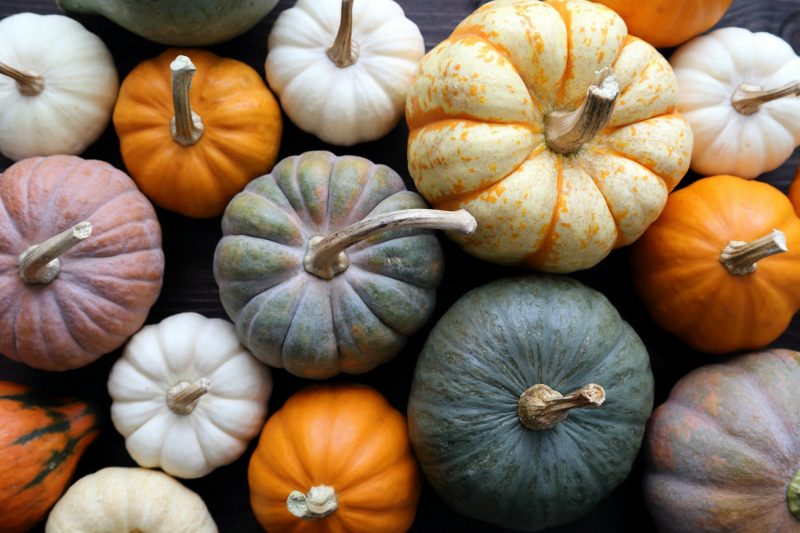
Varieties:
- Mushroom bush. It ripens in the early stages, grows up to 5 kg, the fruits are light orange with black stripes.
- Freckle. An early ripe variety with medium-sized, up to 3 kg fruits of light green color, covered with a light yellow mesh pattern. A distinctive feature of the variety is spotted leaves.
- Almond. It grows to 5 kg, the color of the bark is brownish-orange with clearly visible green stripes. The variety is ripe in medium terms and is good for storage.
Large-fruited pumpkin.
From the name it is clear that her fruits are not small. They accumulate a lot of sugars, are easy to grow and unpretentious.

Varieties:
- Titanium. Perhaps the largest in the world. In theory, it can give a gardener fruits of up to 500 kg! In practice, such pumpkins grow only among record lovers. The variety is very tasty, the fruits are well stored.
- Therapeutic. Early ripening grade. Fruits of gray color with a barely noticeable lighter mesh have a rounded flat shape and a weight of 5 kg. Differ in long storage.
- Graceful. The fruits have an unusual turban shape and pronounced segmentation.Their weight is up to 5 kg, the taste is good, and the yield is high.
Muscat pumpkin.
It differs from its relatives in an elongated, often pear-shaped, later ripening, addiction to heat and excellent keeping quality.
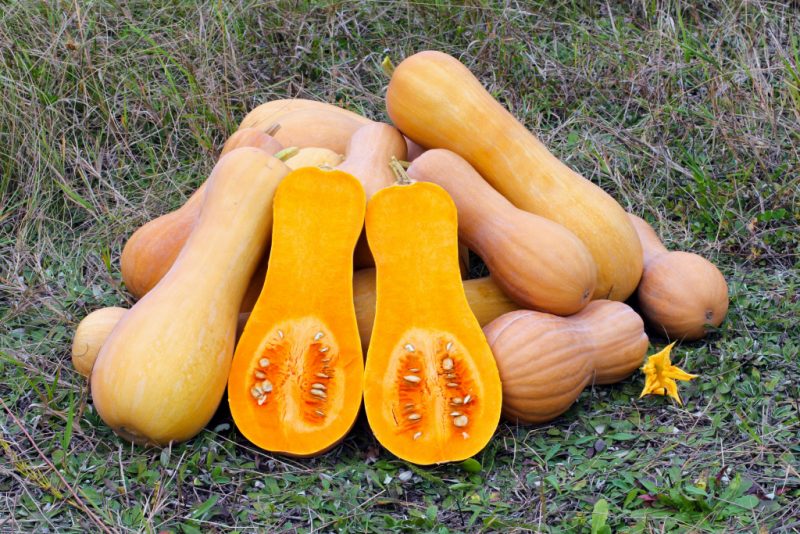
Varieties:
- Honey princess. When sowing in April, it spets in August. Gives fruits weighing up to 4 kg of orange, tasty and sweet.
- Vitamin. It has an elongated shape, a dark green color with lighter spots and a noticeable ribbing. Fruits weighing up to 6.5 kg contain a lot of carotene.
- Muscat pearl. Late-ripe variety with pear-shaped fruits of light orange color with a slight ribbing. The pulp is tender, sweet with a high content of carotene.
Pumpkin - growing features
Originally pumpkin from warm places and despite all the efforts of breeders love for heat has not lost.
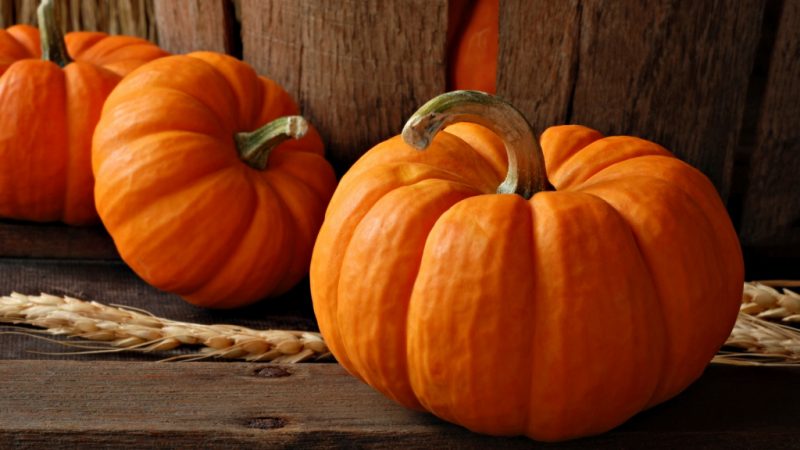
Even its seeds may not sprout if the soil temperature is lower than 20 degrees Celsius.
According to the requirements for soil fertility, only cucumbers overtake a pumpkin. The soil for it should contain a large amount of moisture in order to water a huge sheet apparatus and a considerable size pumpkin. All the fruits that are planted in this plant ripen only in the south. In the middle band, and even more north, its growth must be limited, and the number of ovaries normalized.
The root system of the pumpkin is pivotal and penetrates to a great depth, which allows the plant to feed and extract moisture from the lower layers of the soil. But this does not cancel the regular feeding and watering. The feeding area for powerful specimens should be large, so the minimum distance between climbing plants is at least a meter, and between bush plants - 0.5 m.
Outdoor landing
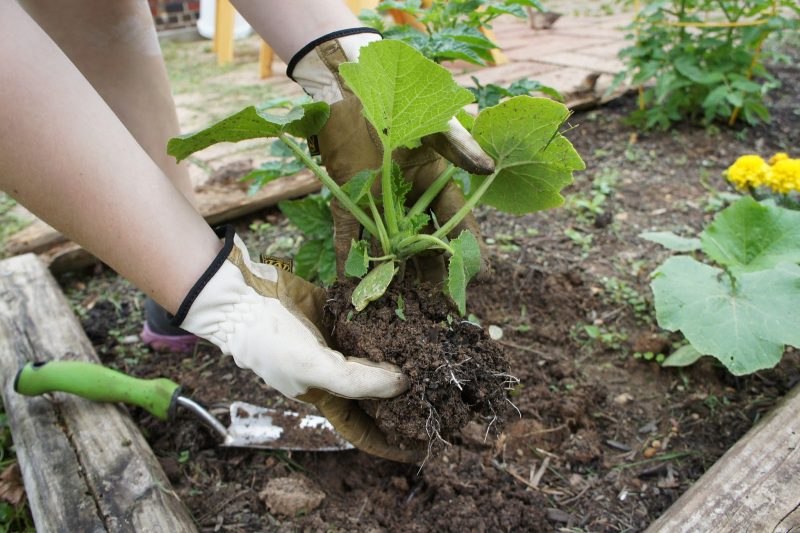
Such a huge plant is simply irrational to grow in a greenhouse. Therefore, the pumpkin is planted in open ground when the air and soil warm up well. Some advanced gardeners have adapted to grow a garden lady in a greenhouse, placing plants on the very edge, and directing the grown lashes to the street. So pumpkin does not occupy the precious volume of the greenhouse, but enjoys all the benefits of warm greenhouse soil.
Seeds or seedlings?
The question is not non-exclusive. By sowing seeds, you can grow only ripe varieties, and then in the warm summer. Therefore, the seedling method of growing pumpkins justifies itself with a guaranteed and high yield.
How and when to plant?
Pumpkins do not grow seedlings for a long time - strong plants quickly master the volume of any pot and begin to suffer from malnutrition. The optimal age of pumpkin seedlings for planting in the ground is 30 days. If we take into account that the soil by this time should have a temperature of 18 degrees, and the outside air at 20, then the resettlement of seedlings to a permanent place can be planned only in early June, and in the northern regions and later.
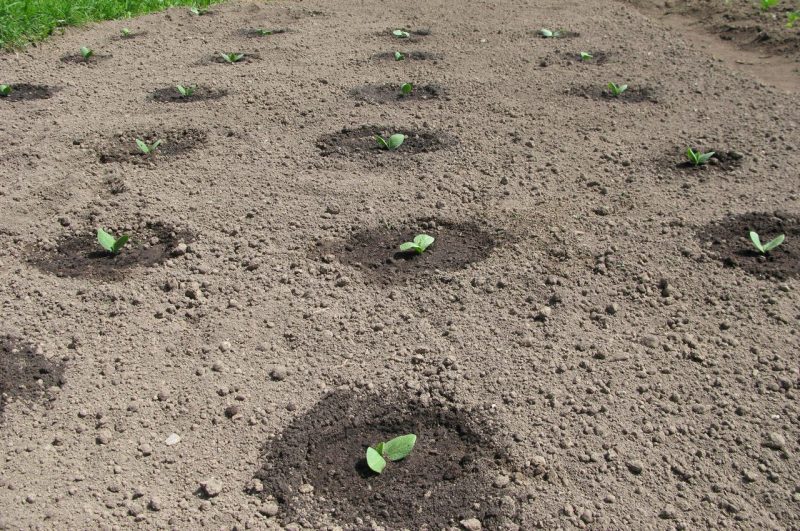
Therefore, seeds are sown in late April or early May.
As with sowing any crop, seeds must first be prepared.
- Only large, fully made seeds are selected, rejecting all damaged and puny ones without pity. The most productive plants are obtained from seeds that lie 2-3 years after harvest.
- Seeds are heated in hot water with a temperature of 50 degrees. The exposure time is 2 hours.
- Germinate between wet cotton pads or just in a damp cloth until the tips of the roots appear.
- Tempered by exposure alternately on the top shelf of the refrigerator and in the room for 12 hours for 5 days.
Prepared seeds are sown in separate containers with a volume of about 1 liter.
Pumpkin does not tolerate root damage during transplantation. It is grown without diving in individual cups.
Crockery for growing is selected so that when transplanting the earthen lump is not damaged. The soil should be loose and fertile, well allow air and water to pass through.
Seedlings contain in the following conditions:
- good lighting;
- daytime temperature - 22 or 23 degrees, and nighttime temperature - not less than 18;
- sufficient watering, but without excess and only warm water;
- nutrition, consisting of 2 top dressings using a solution of complete mineral fertilizer;
- obligatory hardening before landing during the week.
Hardened seedlings are planted in prepared wells. In each you need to add:
- near a bucket of humus;
- a glass of ash;
- a pinch of complex mineral fertilizer;
- spill with two liters of warm water.
When planting, seedlings are not buried.
If a pumpkin is sown with seeds immediately in open ground, they are prepared in the same way as for sowing seedlings. Wells are prepared in a similar manner. Each need to place 2-3 seeds to a depth of about 5-10 cm, depending on the mechanical composition of the soil. The bed is closed with a film, which is removed after emergence. So that the soil warms up better, it can be left by making cruciform holes for the plants. Pinch extra sprouts.
Ground requirement, location selection
Pumpkin loves to eat, so the soil for it must be chosen fertile, with a high content of humus.

- This plant will grow and bear fruit on a compost heap or where manure used to be.
- You can grow it on a warm bed. For its construction, dig a ditch with a depth of 50 cm and a width of 40. Wood waste (shredded branches and chips) is laid at the bottom, covered with grass, hay and a layer of manure. Top covered with fertile soil. The heat generated by decaying plant debris will help the plant grow faster.
- For growing pumpkins, an ordinary garden bed is also suitable, which in the autumn is seasoned with humus, manure or compost in an amount of up to 8 kg per 1 sq. m. 20 g of superphosphate and 15 g of potassium sulfate are additionally added to the same area.
Wherever you plant a pumpkin, the place should be lit all day. Even in a small shade, plant growth and yield are sharply reduced.
When choosing a place for growing pumpkins, one must take into account the fact that she does not tolerate high standing groundwater - the roots will rot. The best predecessors for it are root crops, onions, and especially legumes.
After any plants from the pumpkin or nightshade family, you cannot plant a pumpkin.
Soil acidity is also important - ideally, its reaction should be neutral.
Pumpkin - care in the open ground
To collect a significant crop, all the rules of agricultural technology must be followed on time and in full.
Watering and feeding
A large leaf area evaporates a lot of water, so regular watering for this plant is required. It is especially important for young, recently planted pumpkins.
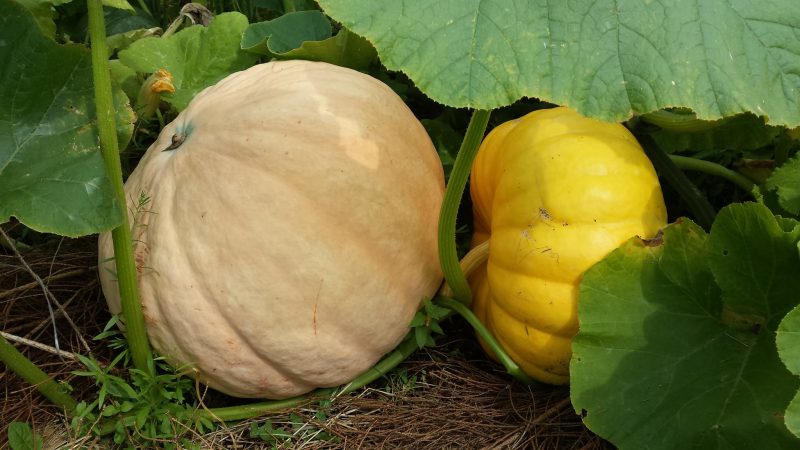
- As soon as the plants begin, watering for a couple of weeks is stopped, if the weather is not too hot. Such a measure will help pumpkins build up the root system.
- With the appearance of female flowers and ovaries, watering pumpkins should be rare, but plentiful - up to 1.5 buckets per plant.
- As soon as the pumpkin has grown to a size appropriate to the variety, watering is reduced to allow the plants to accumulate a sufficient amount of sugars.
If the bed under the pumpkin was well seasoned with nutrients, during the growing season 2-3 plants will be enough fertilizing.
- After the appearance of the fifth leaf, the pumpkin is fed with full mineral fertilizer at the rate of 10 g per plant.
- With the beginning of the formation of lashes, a second dressing is carried out with the same fertilizer, but its rate is increased by 5 g per plant.
In rainy weather, top dressing is applied in a dry form, embedding fertilizers in the soil when loosening. In the heat, they are dissolved in water and combine top dressing with watering. Pumpkin responds well to fertilizing with organic or herbal teas.
Loosening and thinning
Pumpkin cultivation is carried out the day after watering, combining it with weeding. In phase 4 of the leaves, plants are spudded to stimulate the formation of subordinate roots. Hilling is carried out only with moist soil. After the formation of lashes, the internodes are sprinkled with soil.
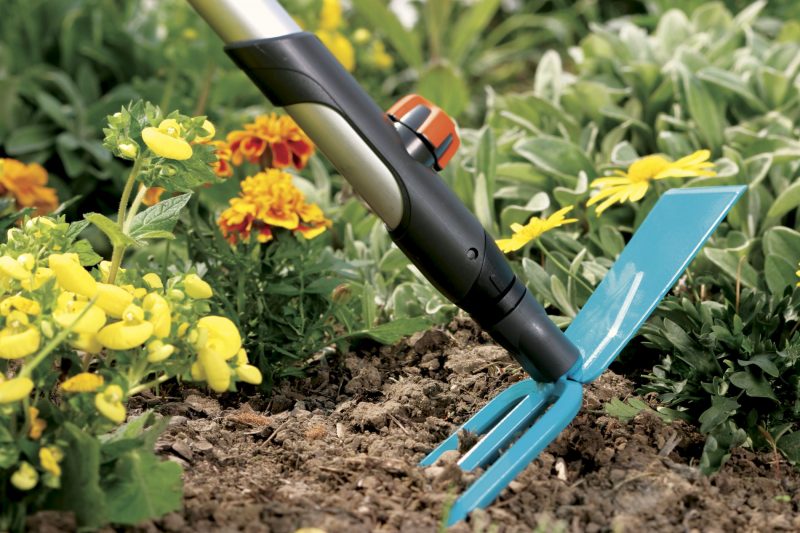
Thinning is carried out at the seedling stage, leaving one of the strongest plants in the hole. The rest are plucked.
Pumpkin lash formation
In order for the fruits to fully ripen, their number must be normalized. On the main stem, you can leave from 2 to 3 fruits, after which count 5 sheets and pinch the whip. On the side lashes do not leave more than one pumpkin, but pinch them in the same way. All non-fruiting shoots are removed.
Pumpkin Diseases and Pests
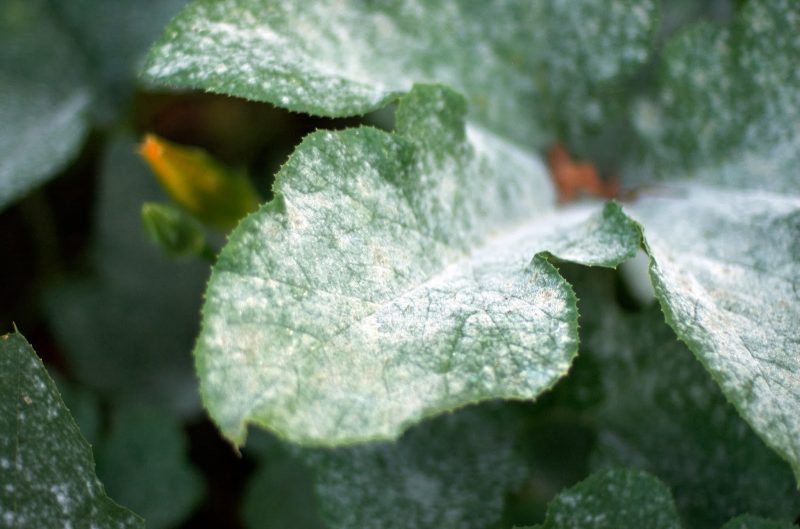
Most often, pumpkin diseases are caused by fungal diseases:
- powdery mildew;
- anthracnose;
- white and root rot;
- bacteriosis.
Most of all they appear in wet and cold weather. Can provoke the disease and pouring cold water. Fungi live on weeds, so weeding and removing weed grass from the site is a necessary measure.
Copper-containing fungicides help fight fungal diseases. In the heat, they are used when the disease occurs, and in wet weather, prophylactic spraying will be needed.
Yellow mosaic - a viral disease, manifested by the appearance of pale spots and wrinkles on the leaves. There is no cure for this disease. At its first signs, all diseased plants are removed so that they do not infect healthy ones.
Of the pests, a spider mite annoys the pumpkin, against which insect acaricides are effective, and melon aphids - they are fought with a 10% karbofos solution.
Harvesting and storage
Only fully ripened pumpkin is well stored. Unripe fruits can also be harvested, but it is better to use them for immediate preparation or processing.
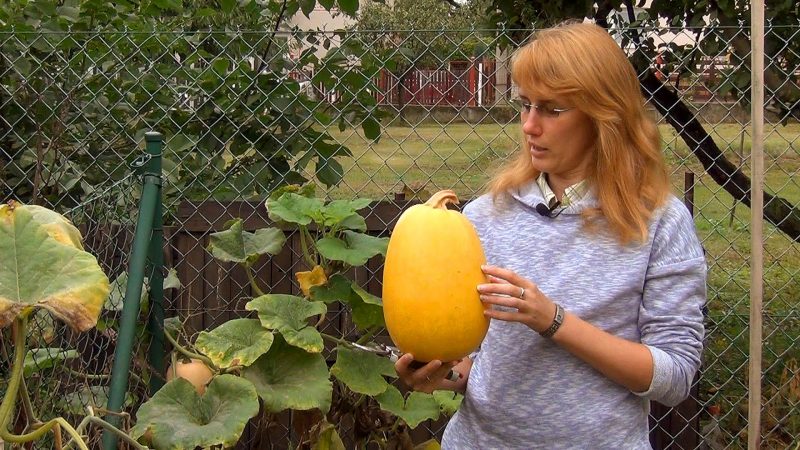
How to find out if the pumpkin is ripe?
- The tops turned yellow and faded.
- The peduncle became hard and lignified.
- The color of the pumpkin has become bright, and the pattern, if any, is more noticeable.
- When tapped, the pumpkin makes a loud sound.
- The crust is firm and does not spring.
If all the signs are there - it's time to harvest the crop. You need to do this before frost, as frozen pumpkins will not be stored. Harvest without damaging the fruit.
The first two weeks, the pumpkin passes the ripening stage at a temperature of 14 degrees and above. In the future, optimal conditions for storing the vegetable: temperature from 3 to 8 degrees Celsius and air humidity of about 70%.












